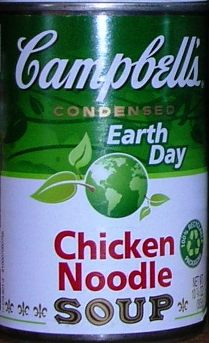 According to a January 2007 article in Consumer Affairs, the Center for Science in the Public Interest (CSPI) threatened to sue Cadbury-Schweppes for marketing 7UP as “All Natural” (if you forgot about those TV ads with people picking 7UP from trees, you can watch them here). The lawsuit was dropped when 7UP agreed to focus on only the undebatably natural ingredients, excluding the controversial sweetener, high-fructose corn syrup (HFCS).
According to a January 2007 article in Consumer Affairs, the Center for Science in the Public Interest (CSPI) threatened to sue Cadbury-Schweppes for marketing 7UP as “All Natural” (if you forgot about those TV ads with people picking 7UP from trees, you can watch them here). The lawsuit was dropped when 7UP agreed to focus on only the undebatably natural ingredients, excluding the controversial sweetener, high-fructose corn syrup (HFCS).
From article: “We are pleased that Cadbury-Schweppes has fixed what was a flawed and deceptive marketing campaign and that this issue was resolved without our actually suing,” said CSPI litigation director Steve Gardner. “We look forward to seeing exactly which words the company uses to describe its ingredients on labels and on marketing materials, but trust they won’t imply that high-fructose corn syrup is ‘natural.'”
And then, over a year later, 7UP is running this ad in magazines.
Apparently, they took away the wording “All natural” and replaced it with… “Au Natural.” Get it? ‘Cause the chick is naked. Riiight.
You think you’re slick, 7UP, with your “100% Natural Flavor.” But you still have HFCS, which is “made through a complex chemical industrial process in which corn starch molecules are enzymatically reassembled into glucose and fructose molecules.” In other words, you’re about as likely find it in nature as you are to find yourself lounging naked in a pile of leaves with America’s Next Top Model.
This makes me angry because it’s undermining all the REAL natural beverage choices out there. And sadly, 7UP is in fact fooling a lot of consumers; for the 15 weeks of the campaign last year, sales rose 18% vs. the same period a year ago according to USA Today.







